2022 update on Lodi's oldest vine growths (part 1)—west side of the Mokelumne River AVA
- RANDY CAPAROSO
- Jun 7, 2022
- 16 min read
In the May 2022 issue of America's leading wine industry magazine, Wine Business Monthly, the cover story—festooned by a photo of a classic, 121-year-old Lodi old vine Zinfandel plant—is entitled, Preservation Programs Around the World Work to Save Old Vines.
The author writes, on efforts to save older vines all around the world:
... the best efforts to protect old vines come from initiatives led not by trade associations or government organizations, but by winemakers, journalists and even consumers. There is now an international Old Vine Conference in the United Kingdom. California has the Historic Vineyard Society. But these efforts are led by volunteers. While government organizations sometimes offer funding for viticulture under the general rubric of agriculture, support for old vines is rare.
The big wineries didn't want [the Historic Vineyard Society] to happen," said Tegan Passalacqua, winemaker at Turley Wine Cellars and an old-vine advocate. "They like paying not so much for old-vine grapes.
Ironically, of course, the rarer old vines become — the Historic Vineyard Society defines "old vine" as anything older than 50 years — the higher the price of their grapes, which would not be to the advantage of big wineries. In Napa Valley and Sonoma County, for instance, where grapes such as Cabernet Sauvignon, Pinot noir, Merlot and Chardonnay dominate vineyards, the far fewer plantings of classic old vine varieties such as Zinfandel now top $4,500/ton. For wineries purchasing these grapes, this translates into a minimum of $45/bottle by the time a wine hits a retail shelf.
In Lodi, which still produces approximately 40% of California's entire Zinfandel crop each year, grape prices are still less than half of Napa's or Sonoma's for the simple reason that top quality grapes, from both young and old vines, are far more plentiful. Hence, Lodi growers can profitably produce grapes for bottles priced anywhere from $12 to $40 dollars. And face it: The vast majority of wine consumers would rather pay $15 to $25 for a bottle of Zinfandel than $45 or $75.
Here's the rub: It is well known that from the perspective of pure quality, the finest Zinfandels come from older vines. There are, of course, exceptions. There are some primo sites in certain parts of Lodi where top quality Zinfandel is being produced from vines less than 40 years old. Excellent examples include the Mikami and Maley's-on-Lucas Road vineyards on the west side, and Cemetery Vineyard and Mettler Family's HGM Vineyard on the east. All the same, it's after 50 years of age that Zinfandel plants develop a deep enough root system and thick enough trunks and spurs to produce the finest and most consistent quality wines. For grape varieties such as Carignan, vintners cite 75 or 80 years as the length of time before vines produce optimal quality.
There's no real science behind these estimations. Wine quality, as everyone knows, is a perceived assessment. In an interview during Zinfandel Advocates & Producers' annual grand tasting in San Francisco in 2018, Passalacqua explained this sensory phenonmenon:
We [Turley Wine Cellars] are one of those wineries that goes through the tedious process of picking young vines separately. Most wineries bottle old vine Zinfandels from vineyards with at least 20% replants [i.e., younger vines planted in vineyards to replace dead old vines]. But they just pick the whole field, and their vineyard management teams want them to do it that way. We pick separately, so that actually gives us a true standard that we can test. We have wines made from old vines, and wines made from young vines, and we KNOW there’s a difference. We have worked with just one vineyard in Napa Valley where, in some years, the young vines could be of the same quality as the old. But that’s out of working with 50 vineyards throughout the state.
That said, we would contend that the preservation of old vines in the Lodi appellation would be to the beneficial to all wineries, big and small. While large scale wineries would prefer lower priced grapes in order to profitably produce wines retailing between $8 and $18, quality is still a priority. In that price range, the average consumer often bases buying decisions on "comfort" brands—labels that the consumer feels will deliver a consistent level of quality. In order to remain competitive, wineries need grapes that meet consumer expectations.
Here in Lodi, the best way we know to keep older vines in the ground is to recognize, and celebrated, these vineyards. The only reason why vineyards survive 50, 75 or over 100 years is because they are valued—by owners, caretakers, wineries, at least someone. A classic example is Lodi's oldest vineyard, called Bechthold, consisting of 25 acres of own-rooted Cinsaut that were planted in 1886 for a Stockton winery (called El Pinal) that went out of business during the 1920s. By the early 2000s, Bechthold's owners, Al Bechthold and Wanda Woock, fully acknowledged that it was costing them more to farm the vineyard than what they were getting for the grapes. But the vines remained in the ground, primarily for sentimental reasons—it was the first vineyard planted by Woock's great grandfather, Joseph Spenker.
The Bechthold Vineyard, however, survived because it was eventually "discovered" by a number of small, specialty producers who came to value the soft, round yet spicy scented reds and rosés produced by these ancient vines, and they were willing to pay four times more for the fruit. The vineyard became so well known that, in 2014, the California State Fair named it the state's "Vineyard of the Year."
Old vine Lodi growths—west side of Lodi's Mokelumne River AVA
As the years go by, more and more of these special, old vine growths are beginning to be recognized. Many of them (not all) now go into bottlings with their vineyard designations clearly stated on the label. The more this happens, the more consumers, trade and media are able to distinguish and appreciate the sensory qualities unique to these particular vineyards. Getting to know the unique taste of each of these old vine vineyards only increases their value, thus their chances of survival.
By the same token, in order for Lodi to continue to be recognized as the home of more old vine plantings than anywhere else in California, we all need to better appreciate these special vineyard; and loudly demonstrate it, with our wallets!
Please note, in the following listing we are defining "west" vs. "east" sides of Lodi by the historic Central Pacific Railroad tracks (now utilized by Southern Pacific Railroad and Amtrak) that runs north-south through the center of the City of Lodi. This demarcation correlates with the observations of most old-time growers, who find sandier, almost beach-like variations of the classic Tokay series fine sandy loam soil on the east side, as opposed to loamier variations of the same soil on the west side (for more details, see our post Direct impact of east vs. west side terroirs on the taste of Lodi Zinfandel).
Part 1 (listing west side growths) of our accounting of Lodi's special old vines, here in 2022:
Bechthold Vineyard, Cinsaut
Vineyard name: Bechthold Vineyard Year planted: 1886 Size: 10.1 hectares Variety(ies): Cinsaut Wineries: Michael David Winery; Turley Wine Cellars; Onesta Wines; McCay Cellars; Fields Family Wines; Jessie's Grove Winery; Estate Crush; Scholium Project; Two Shepherds; BIRICHINO; Odisea Wine Company; Lorenza True Rosé; Ser Winery
This 25-acre block consists entirely of own-rooted, spur pruned, largely double layered vertical cordon trained Cinsaut, originally planted as “Black Malvoisie” by Joseph Spenker in 1886.
It produces both soft, sumptuous reds as well as strikingly Provençal-style rosés by at least a dozen wineries each year.
While still owned by Joseph Spenker’s great granddaughter Wanda Woock, this block has been managed and farmed organically by Phillips Farms (the farming arm of Michael David Winery) nsince 2008. Bechthold Vineyard was named 2014 California Vineyard of the Year by the California State Fair, and remains revered for being the oldest continuously farmed vineyard in the Lodi AVA.
Registered by Historic Vineyard Society.
Marian’s Vineyard, Zinfandel Vineyard name: Marian's Vineyard Year planted: 1901 Size: 3.3 hectares Variety(ies): Zinfandel Wineries: St. Amant Winery
This revered 8.3-acre block of own-rooted, head trained (i.e., gobelet) Zinfandel was originally planted by the Mettler family in 1901 south of the City of Lodi along West Lane, north of Armstrong Road. It is now part of Mohr-Fry Ranches, owned and farmed by the Fry family since 1965.
Stuart Spencer—owner/winemaker of St. Amant Winery, which has taken nearly the entire vineyard since 1999—has described these as Lodi's “mother of all vines,” an opinion with which few Lodi vintners would beg to differ.
The combination of meticulous, LODI RULES-driven viticulture, exceptionally sandy soil with limestone lenses, or streaks, and a unique clonal selection has resulted in enduring vine health and strikingly different vine and cluster morphology, compared to adjoining Mohr-Fry Ranches Zinfandel blocks planted between 1941 and 1945.
These vines still yield 2.5 to 4 tons per acre and produce a distinctively bold, concentrated style of Zinfandel somewhere between the floral, delineated styles of Lodi’s east side and the lush, round, earthier styles of Lodi’s west side.
Vineyard-designate Marian’s Vineyard Zinfandels have been bottled by St. Amant since 1999, as well as under St. Amant's Lodi Native label.
Registered by Historic Vineyard Society.
Soucie Vineyard, Zinfandel
Vineyard name: Soucie Vineyard Year planted: 1916 Size: 2.4 hectares Variety(ies): Zinfandel Wineries: m2 Wines; Michael David Winery; PRIE Winery
This 100% own-rooted, head trained Zinfandel vineyard—its oldest block dating back to 1916—has been owned, planted and farmed by the Soucie family for three generations. Kevin Soucie is the current custodian. Located on the far western edge of the Mokelumne River AVA, closest to the Sacramento-San Joaquin River Delta, this block is known for its extremely fine, talcum powder-like variant of the Tokay series sandy loam soil, sometimes identified as a DeVries series sandy loam.
The growth and success of Lodi’s m2 Wines have been intertwined with Soucie Vineyard since the winery’s founding in 2002, although most of the Soucie Vineyard Zinfandel goes to Michael David Winery.In years past, Soucie Vineyard played a major part of Michael David’s top-of-the-line Lust Zinfandel and was one of the original seven properties going into the first 7 Deadly Zins bottlings.
Soucie Vineyard has always produced one of Lodi’s most aromatic, fleshy, full-bodied yet well-balanced Zinfandels—think of the line by Bob Dylan about a “mattress balanced on a bottle of wine.” Its wines are pungent with red and black berried qualities tinged with unmistakably loamy/earthy, organic qualities.
Vineyard-designate Soucie Vineyard Zinfandels are bottled by m2 Wines as Soucie Vineyard and Select Block (the latter, a reserve cuvée culled from specific rows receiving more leaf pulling and fruit dropping), as well as under m2's Lodi Native label. There is also a vineyard-designate Soucie Vineyard Zinfandel produced by PRIE Winery.
Registered by Historic Vineyard Society.
Wegat Vineyard, Zinfandel Vineyard name: Wegat Vineyard Year planted: 1958 Size: 8.5 hectares Variety(ies): Zinfandel Wineries: Maley Bros. (bottled as Lodi Native); Macchia Wines
This 21-acre vineyard represent the “crown jewel” of the 330 acres of grapes owned and farmed by the Maley family, close cousins of Michael David Winery’s Phillips family and all descendants of Andrew Harshner, who began homesteading on Lodi’s west side in 1869. The Maleys were one of the seven growers comprising Lodi’s original "7 Deadly Zins."
Wegat Vineyard is farmed by Todd Maley, the son of Joseph Maley who first established the Maley Bros. wine brand with his late brother Louis Maley.
It consists primarily of spur pruned, layered vertical cordon trained vines planted in 1958 on St. George rootstock.
Plant material was originally taken from an Acampo vineyard, a selection now prized by wineries such as m2 Wines, Oak Farm Vineyards and Macchia Wines for its consistently loose, fairly uniform, small-berried clusters.
Wegat yields what is considered to be quintessential west-side Zinfandel, distinguished by flowery, red-towards-blue berried fruit qualities underlined by signature loamy/earthy undertones, and rounded, plush texturing.
Wegat Vineyard Zinfandel is now bottled each year under Maley Bros.’s iteration of Lodi Native Zinfandel.
ZinStar Vineyard, Zinfandel Vineyard name: ZinStar Vineyard Year planted: 1933 Size: 1.4 hectares Variety(ies): Zinfandel Wineries: The Lucas Winery
Zinstar was notably Lodi’s first single-vineyard estate bottling, starting with the 1978 vintage and bottled every year since by The Lucas Winery.
This 3.5-acre block consists of spur pruned, double layered vertical cordon trained Zinfandel planted on its own roots in 1933. It is located in the heart of the Mokelumne River AVA’s west side, just east of the historic Spenker Ranch/Jessie’s Grove property, and north of West Turner Road.
It is certified organic by California Certified Organic Farmers (CCOF), and sustainably by LODI RULES for Sustainable Winegrowing.
This vineyard produces a medium-bodied style of Zinfandel of moderate alcohol, zesty natural acidity, and distinctively earth-toned, lush fruit qualities, which results as much from a stylistic choice originated by owner David Lucas and continued by his spouse, winemaker/vineyard manager Heather Pyle Lucas, as from intrinsic terroir.
TruLux Vineyard (Pescador Vineyard), Zinfandel Vineyard name: TruLux Vineyard (a.k.a., Pescador Vineyard) Year planted: Mid-1940s and mid-1970s Size: 12 hectares Variety(ies): Zinfandel Wineries: McCay Cellars; Watts Winery; Michael David Winery; Baron Herzog Wines
Another one of Lodi’s most distinctive west-side vineyards, TruLux's 12 hectares of Zinfandel on St. George rootstock are located less than a quarter-mile south of West Kettleman Lane, behind Van Ruiten Family Winery. Half the vines were planted during the 1940s, with an inter-planting of younger vines put in during the 1970s.
The vineyard is owned and farmed by Keith Watts and has also been known as Pescador, the name of the Watts family’s late Filipino vineyard manager who originally planted and managed the vineyard.
The vineyard is distinguished by unusually tall—even by Lodi standards, topping 6-foot—vertical cordon trained vines with a "cake” layering of spurs. It produces atypically small, loose, elongated clusters prized by wineries such as McCay Cellars (bottled as TruLux Vineyard), Watts Winery (bottled as Pescador Vineyard), and Michael David Winery.
TruLux and Pescador vineyard-designate Zinfandels are distinguished by meaty, dark fruit qualities with smidgens of perceptible earthy/loam (but never herby or barnyardy) notes almost reminiscent of Southern French garrigue, couched in a balanced, medium-full body.
Royal Tee Vineyard, Zinfandel Vineyard name: Royal Tee Vineyard Year planted: 1889 Size: 2 hectares Variety(ies): Zinfandel; Carignan; Mission; Flame Tokay; Black Prince Wineries: Jessie's Grove Winery; Marchelle Wines; Alquimista Cellars
The 4.95-acre Royal Tee Vineyard is Lodi’s oldest planting of Zinfandel. Planted on its own roots in 1889 by Joseph Spenker, it is still owned and farmed by one of Spenker's descendants, Greg Burns, who founded Jessie’s Grove Winery in the late 1990s.
Royal Tee Vineyard also represents Lodi’s oldest surviving example of the classic, California style “field mix” of approximately 84% Zinfandel, with a balance of Carignan, Mission, Flame Tokay, and Black Prince (a.k.a., Rose of Peru). All vines are head trained and spur pruned.
Up until 2017, Jessie’s Grove produced Royal Tee Zinfandel exclusively from Zinfandel vines isolated in the vineyard, with the Royal Tee Carignan and Flame Tokay grapes going into Jessie’s Grove Ancient Vine Carignane and Ancient Vine Tokay.
In 2015 Alquimista Cellars, led by acclaimed winemaker/partner Greg La Follette, began harvesting and producing traditional “field crush” mixes of all five grapes, yielding exceptionally silken, zesty styles of Zinfandel with spiced floral notes almost suggesting white wine perfumes.
Since the 2018 vintage, a field mix blend of Royal Tee Vineyard has been bottled under Greg La Follette's Marchelle Wines label. Since the same vintage, Jessie's Grove also began producing field-mix style Zinfandels from Royal Tee.
Spenker Ranch (Jessie's Grove), Carignan Vineyard name: Spenker Ranch (a.k.a., Jessie's Grove, Block 4, 1900 Block) Year planted: 1900 Size: 3.2 hectares Variety(ies): Carignan Wineries: Jessie's Grove Winery; Sandlands Wine; Precedent Wine; Markus Wine Co.; Holman Cellars; Leaf and Vine; Alquimista Cellars; Marchelle Wines
This 8-acre block—referred to by the grower/owner as Block 4 as well as the 1900 Block—consists of own-rooted Carignan originally planted along DeVries Road by Joseph Spenker in 1900, sitting on the western edge of the 320-acre (265 acres planted) Jessie’s Grove property.
This Carignan planting yields the majority of fruit going into Jessie’s Grove’s perennially award-winning Ancient Vine Carignane, as well as bottlings by Sandlands Wine, Holman Cellars, Leaf and Vine, Markus Wine Co.'s Domo and Zeitlos blends, Precedent Wine, Alquimista Wines and Marchelle Wines.
Westwind Vineyard (Jessie's Grove), Zinfandel Vineyard name: Westwind Vineyard Year planted: 1941 Size: 5.6 hectares Variety(ies): Zinfandel Wineries: Jessie's Grove Winery; Bogle Vineyards
At the center of the Jessie’s Grove estate is a second notable block of own-rooted, spur pruned Zinfandel planted in 1941 called Westwind Vineyard. It is bottled by Jessie's Grove as a vineyard-designate wine, producing a classic, full-bodied, dusty/earthy nuanced style of west-side Lodi Zinfandel. Most of Westwind's Zinfandel goes into Bogle Vineyards reds.
Bonnotto Vineyard, Zinfandel Vineyard name: Bonnotto Vineyard Year planted: 1930s Size: 0.8 hectare Variety(ies): Zinfandel Wineries: McCay Cellars
This own-rooted vineyard was planted in the 1930s by Ernie Spenker, a cousin of Joseph Spenker, and has been owned and farmed by the Bonnotto family since the 1950s.
Typical of the Zinfandel blocks planted by this branch of the Spenker family along DeVries Road and south of West Turner Road, these spur pruned vines are trained low to the ground (2- to 3-foot height) in a traditional gobelet style.
Since 2014, a Bonnotto Vineyard Zinfandel has been produced by McCay Cellars. The wine exhibits a somewhat meaty yet rounded, medium-full body with black and red fruit qualities, with a tinge of the dusty/loamy/earthy notes typical of Zinfandels grown on Lodi’s west side.
Bishofberger Vineyard, Carignan Vineyard name: Bishofberger Vineyard Year planted: 1936 Size: 4.9 hectares Variety(ies): Carignan Wineries: Michael David Winery
This 12-acre block of own-rooted, vertical cordon trained Carignan was planted in 1936 just south of West Turner Road between DeVries and North Ray roads.
It is owned and farmed by Bob Bishofberger, a close cousin to the Phillips family of Michael David Winery. Bishofberger Vineyard Carignan is occasionally bottled on its own by Michael David Winery, with the vineyard usually identified on the back label.
This Carignan is typically between medium- to full-bodied (about 13.5% alcohol), retaining zesty natural acidity, moderate tannin and a classic red cherry varietal aroma with leafy/herby nuances.
Mohr-Fry Ranches, Zinfandel Vineyard name: Mohr-Fry Ranches Year planted: 1941, 1942, 1943, 1944, 1945 and 1947 Size: 44.5 hectares Variety(ies): Zinfandel Wineries: St. Amant Winery; Oak Farm Vineyards; Drava Wines; Scotto Cellars
In addition to their venerated Marian’s Vineyard, the Fry family owns and farms another 9 different blocks of own-rooted, head trained Zinfandel planted over several years during the early to mid-1940s. All of these blocks are collectively known as "Mohr-Fry Ranches" and registered with the Historic Vineyard Society.
8 of the blocks are located at the Fry family home ranch on West Lane is located south of the City of Lodi, north of Armstrong Road, across West Lane from the Deshmesh Darbar Sikh Temple.
There is a separate block, planted in 1947, located on DeVries Rd. north of Peltier Rd., at the northern edge of the Mokelumne River AVA.
The West Lane blocks are dominated by slightly sandier variations of the Tokay series sandy loam defining the Mokelumne River AVA, with unusual (for Lodi) limestone layers in the subsoil.
Mohr-Fry Ranches vineyard-designate labeled Zinfandels are produced by St. Amant Winery, Oak Farm Vineyards, and occasionally by several other wineries. They typically exhibit very “west-side” characteristics, with rounded, full-bodied, red and black fruit qualities, and tinges of dusty/loamy notes.
Besides being leading exponents of LODI RULES for Sustainable Winegrowing, Jerry Fry and vineyard manager/son Bruce Fry were honored by the California Association of Winegrape Growers as their 2016 "Grower of the Year."
Mule Plane Vineyard, Carignan Vineyard name: Mule Plane Vineyard Year planted: 1927-1930 Size: 2 hectares Variety(ies): Carignan Wineries: m2 Wines; Precedent Wines; Holman Cellars; Leaf and Vine Winery, Bokisch Vineyards; BIRICHINO Winery
This 5-acre block of own-rooted Carignan, located on Davis Road less than a quarter-mile south of Peltier Road, was planted between 1927 and 1930 by the Shinn family. It is still owned by the same family and today is farmed by Shinn Ranch's sixth-generation managing partner John Shinn.
The vineyard is called Mule Plane because it was originally leveled by mule and plow.
These large spur pruned, vertical cordon trained vines—most reaching 6 feet in height—are historically high yielding, reaching as much as 7 tons per acre.
The grapes go into vineyard-designate Carignans produced by a number of small, artisanal style wineries (including m2 Wines, Precedent Wines, Holman Cellars, Leaf and Vine Winery, Bokisch's Tizona label and BIRICHINO Winery).
The vineyard is certified by LODI RULES for Sustainable Winegrowing and registered with the Historic Vineyard Society.
Church Block, Mixed grapes
Vineyard name: Church Block Year planted: Early 1930s Size: .7 hectares Variety(ies): Approximately half-acre each of Carignan, Alicante Bouschet and Petite Sirah Wineries: Markus Wine Co.
Post-Prohibition mixed grape planting of own-rooted, gobelet-trained vines located south of the City of Lodi, just east of the historic Borra Vineyards winery (founded in 1975, shut down in 2018).
This tiny 1.5-acre block was donated to the Catholic church in the 1960s, and purchased by Steve Borra Jr. in the early 1970s. Property is now owned by Borra's daughter, Gina Granlees (with spouse, Mike Granlees).
Utilized by both Steve Borra Sr. and Steve Borra Jr. to produce co-fermented field blend reds, blended with fruit from trellised Barbera planted next to Borra Winery in the mid-1970s. Between 2010 and 2018, bottled as Borra Vineyards Heritage Red.
Traditionally produces deep, concentrated red wines with a defining loamy earthiness and characteristic high acidity, reflecting the slow ripening and low yields of these small, gnarly vines, rarely yielding more than 3 tons/acre.
Now managed and utilized in red wine blends crafted by Markus Niggli—Borra Vineyards' winemaker during its last 15 years—for wines going under his Markus Wine Co. label.
Recognized by Historic Vineyard Society.
Manassero Vineyard Zinfandel, Carignan and Grenache Vineyard name: Manassero Vineyard Year planted: 1938-1939, 1960-1962 and 1990 Size: 32.3 hectares Variety(ies): Zinfandel; Carignan; Grenache Wineries: McCay Cellars; Bogle Vineyards; Michael David Winery
The most notable parcel among the vineyards collectively known as Manassero Vineyard is a 30-acre block of head trained Zinfandel and Grenache (the latter, just 1 acre) originally planted in 1938-1939. It is owned and farmed by M.B. Manassero & Sons, and located on Armstrong Road east of North Lower Sacramento Road, south of the City of Lodi.
The oldest block consists of own-rooted vines planted by Joseph Manassero, who immigrated from Northern Italy in the early 1900s. Current vineyard manager Greg Manassero is a fourth-generation Lodi grower. Greg's father Leonard Manassero is a first cousin of the late Steve Borra, whose Borra Vineyards home vineyard is located just west of Manassero Vineyard.
The west and west-north quadrants of the oldest vines consist of Zinfandel planted in 1962 (own-rooted) and 1990 (grafted), respectively. There is an east-north quadrant of Primitivo planted after 2010.
Most of the Zinfandel goes to Bogle Vineyards and Michael David Winery. The old vine Grenache goes entirely to McCay Cellars.
M.B. Manassero & Sons also owns and farms a separate 30-acre block of own-rooted 1961 Carignan and Zinfandel at Armstrong Road and North Ham Lane, and another 20 acres of own-rooted 1960 Carignan on Harney Lane at South Mills Avenue. All of the Manassero properties are certified by LODI RULES for Sustainable Winegrowing.
Hatterle Vineyard, Zinfandel Vineyard name: Hatterle Vineyard Year planted: 1930 Size: 2.8 hectares Variety(ies): Zinfandel Wineries: Michael Klouda Wines; Michael David Winery
Hatterle's head trained, spur pruned Zinfandel vines are located off West Turner Road, and originally planted on their own roots toward the end of Prohibition in 1930.
The vineyard has been farmed by Roland Hatterle since the late 1960s and now appears in vineyard-designate wines produced by Michael Klouda Wines in a contemporary, restrained, early-picked, terroir-focused style.
Star Valley Vineyard, Zinfandel Vineyard name: Star Valley Vineyard Year planted: 1962 Size: 3.2 hectares Variety(ies): Zinfandel Wineries: Alliance Winery
This 8-acre block is located on North Davis Road at Larson Road. It was planted in 1962 and is still owned and farmed by JW Moore Vineyards, a Lodi vineyard management company now in its fifth generation.
Vineyard consists of own-rooted, vertical cordon trained Zinfandel, spur pruned in two to three layers.
It is registered by the Historic Vineyard Society and is LODI RULES for Sustainable Winegrowing certified.
Grapes historically went to the Mondavi family of Charles Krug Winery. Since 2016, most of the fruit has been going to Lodi-based wineries, with a small portion bottled under JW Moore's own label, Alliance Winery (100% sourced from the vineyard, although the bottling does not carry a vineyard designation).
Star Valley produces a classic west-side Lodi style of Zinfandel—plump and round, with black cherry leaning towards blueberry and faint loamy earthiness.
Giorgi/Ferrari Vineyard, Zinfandel Vineyard name: Giorgi/Ferrari Vineyard Year planted: Mid-1920s Size: 6 hectares Variety(ies): Zinfandel Wineries: Delicato Family Vineyards
This Prohibition era Zinfandel block sits in the middle of the west side of the Mokelumne River AVA; the own-rooted, head trained vines originally planted by Corrado and Santina Giorgi.
Current owner Diedre Ferrari is the granddaughter of Corrado and Santina Giorgi. Ferrari is determined to keep the old vine planting in the family despite the fact that the grapes currently go to field-packing companies selling directly to retailers in Canada and the East Coast—whole grape clusters packaged in 36-pound wood crates—who supply home winemakers (in recent years, Delicato Family Vineyards has purchased some of the grapes for their blending program).
The vineyard is registered by Historic Vineyard Society.
Look for our next post: 2022 update on Lodi's oldest vine growths (part 2)—east side of the Mokelumne River AVA
Randy Caparoso is a full-time wine journalist who lives in Lodi, California. Randy puts bread (and wine) on the table as the Editor-at-Large and Bottom Line columnist for The SOMM Journal, and currently blogs and does social media for Lodi Winegrape Commission’s lodiwine.com. He also contributes editorial to The Tasting Panel magazine and crafts authentic wine country experiences for sommeliers and media.





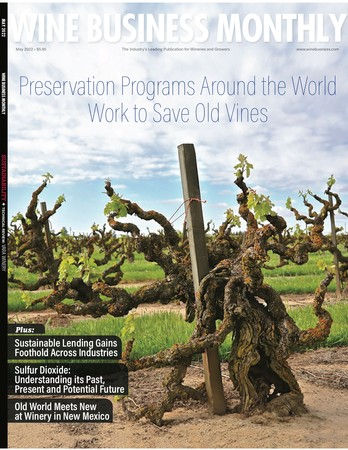



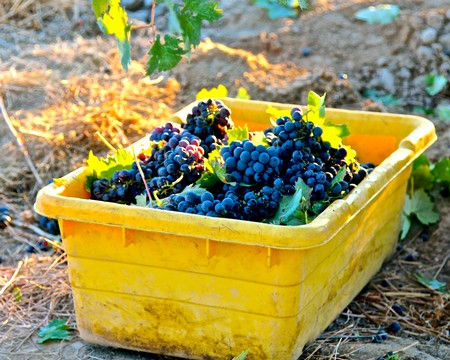

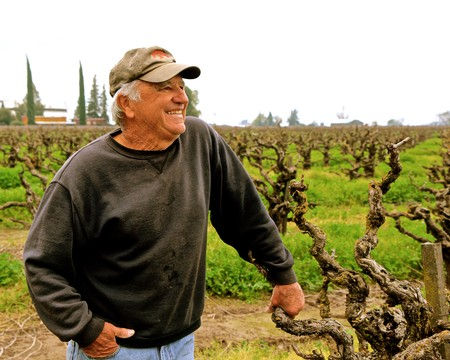


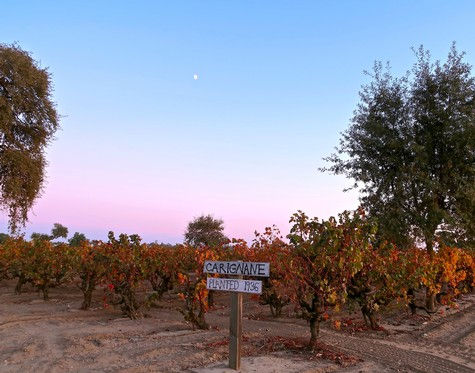


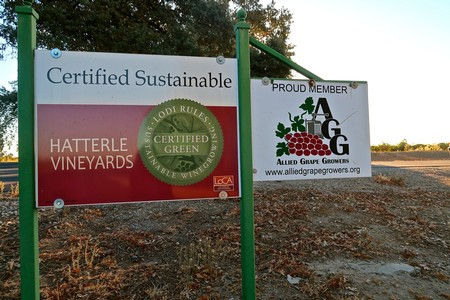




Comments